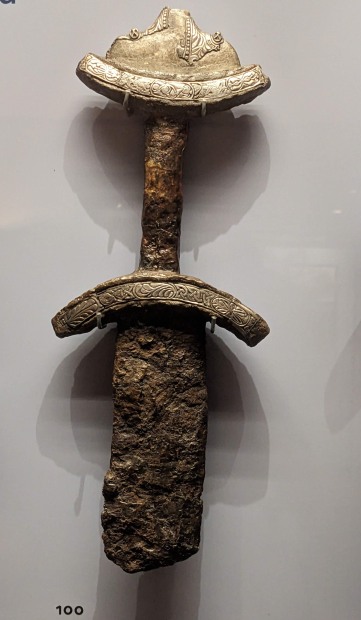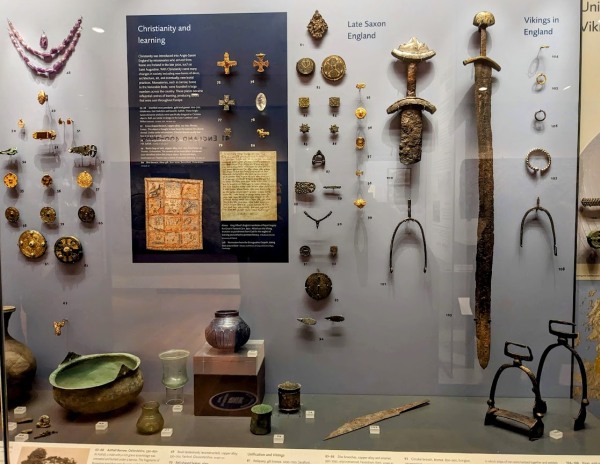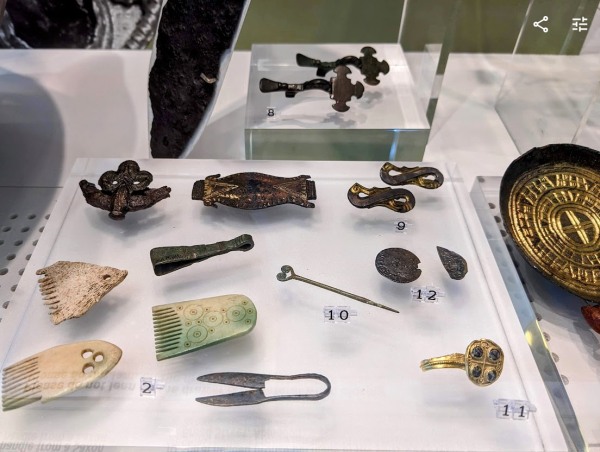
In 865 AD, a Danish army arrived in Britain, sweeping through the north and leaving destruction in its wake. As they advanced south, Abingdon Abbey was burned to the ground. An artifact from around that time is a decorated Saxon sword known as the Abingdon Sword.

Currently displayed in the Ashmolean Museum in Oxford on Level 2 (Gallery 41: England 400–1600), among the late Saxon artifacts, the Abingdon Sword is a fine example of Anglo-Saxon craftsmanship. The label says:
100. Sword, iron and silver. c. 875, Abingdon, Oxfordshire. The blade of the ‘Abingdon Sword’ was produced through a process known as pattern welding, in which strips of iron were twisted together and welded into a pattern that gave the blade added strength. (AN1890.14)
The sword was discovered near Abingdon in 1874 and later acquired by the antiquarian Sir John Evans, who presented it to the Ashmolean in 1890. The Ashmolean holds many artifacts from Abingdon, though few are currently on display. They can be seen online through the museum’s digital collections. Just search ‘Abingdon’.

For those interested in seeing Anglo-Saxon history up close, a visit to Abingdon Museum is worth the climb if you’re able. A replica of the Abingdon Sword is on display. The museum also has a display case, along with two drawers of Anglo-Saxon artifacts.
One of the most significant discoveries in Abingdon was the large Anglo-Saxon cemetery uncovered in 1934 during the construction of Saxton Road. This burial site revealed many inhumations and cremations, accompanied by grave goods such as weapons, tools, and jewellery.
Thank you for the link.
I took my granddaughter to the Ashmolean on Monday and made a point of viewing the sword.